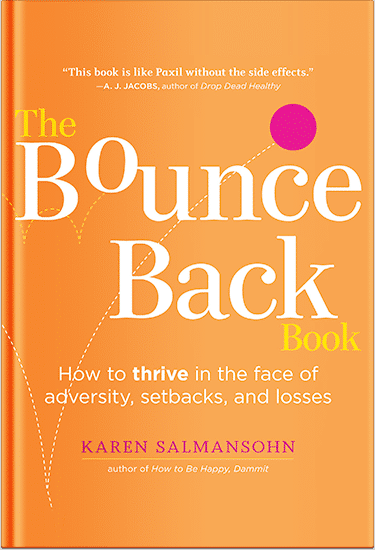
Learn to recognize and respond to gaslighting with insights from a leading expert on maintaining boundaries with toxic people. This article explores 10 common toxic phrases used by gaslighters and provides empowering responses to shut down manipulative tactics.
Ah, the subtle (or not-so-subtle) art of gaslighting.
It’s a manipulation tactic that’s both pervasive and corrosive.
When someone gaslights you, they’re undermining your reality, planting seeds of doubt, and making you question your perceptions, memories, and sanity.
Thankfully, with some knowledge and empowerment, you can disarm these psychological traps.
I’m writing this article because I’m a leading expert on maintaining boundaries with toxic people.
Plus I’m an Oprah and Psychology Today columnist – and bestselling author of the therapist-recommended course, Manage and Avoid Drama Llamas.
Below are ten toxic phrases often used by gaslighters, along with the responses you can use to shut down their manipulative ways.
10 Toxic Phrases Gaslighters Use And How To Respond
Let’s delve deeper into each toxic phrase, examining the underlying manipulation tactics, and elaborating on why the given responses are empowering and self-protective.
1. “You’re Overreacting.” 
What They’re Trying to Do: Minimize your feelings to deflect responsibility and make you question your reaction.
Healthy Response: “”I can see why you might think that, but my feelings are real and important. Let’s sit down and talk about why this upset me.”
Why It Works: This response acknowledges the toxic person’s viewpoint but firmly asserts your right to feel and express your emotions.
2. “You’re Being Too Sensitive.”
What They’re Trying to Do: Invalidate your emotions and make you feel guilty for having feelings.
Healthy Response: “It’s normal for people to feel things strongly sometimes. It’s not about being sensitive. It’s about feeling respected. I just want to make sure you’re listening and getting where I’m coming from. Let’s talk, okay?”
Why It Works: This response reframes the issue as a matter of respect and understanding rather than an attack on your sensitivity.
3. “I Never Said That.”
What They’re Trying to Do: Make you question your memory, leading you to doubt your sanity and perception.
Healthy Response: “I remember it differently, and our memories may vary. But that doesn’t change the impact it had on me. Let’s work together to get past this.”
Why It Works: This response avoids getting caught in a memory battle and instead redirects focus on resolving the issue.
4. “You’re Crazy.”
 What They’re Trying to Do: Discredit you and divert attention away from the real issue.
What They’re Trying to Do: Discredit you and divert attention away from the real issue.
Healthy Response: “Using that word isn’t fair or kind. And it’s not helping us to solve anything. Let’s put aside hurtful words and focus on the situation. What’s important is working through this and coming to an understanding.”
Why It Works: This response defuses the name-calling and insists on addressing the actual problem.
5. “You Must Have Imagined It.”
What They’re Trying to Do: Cause you to doubt your reality and experience, undermining your confidence.
Healthy Response: “I trust my memory and my feelings. It’s important for us to try to hear each other – and understand each other. Let’s calmly discuss what happened openly and honestly… maybe even step by step? That way, we can figure out where the confusion might be and sort it all out.”
Why It Works: This response reasserts trust in yourself and seeks an honest dialogue.
6. “That’s Just How I Am.”
What They’re Trying to Do: Avoid responsibility by claiming that their actions are an unchangeable part of their personality.
Healthy Response: “I understand people are different, but that doesn’t give anyone the right to hurt others. Let’s talk about how we can respect each other and treat each other better.”
Why It Works: This response recognizes personality differences but insists on accountability.
7. “You’re Making a Big Deal Out of Nothing.”
 What They’re Trying to Do: Diminish your concerns, making you feel irrational for caring about the issue.
What They’re Trying to Do: Diminish your concerns, making you feel irrational for caring about the issue.
Healthy Response: “Even if it seems small to you, it’s a big deal to me. I would really appreciate it if we could talk about why this is important and feels big to me.”
Why It Works: This response emphasizes the importance of the issue to you and demands respectful communication.
8. “Everyone Thinks You’re Wrong.”
What They’re Trying to Do: Isolate you and create a sense of pressure from an unseen majority.
Healthy Response: “It’s possible others might not understand my perspective. But right now, I’m just interested in focusing on how you and I can resolve this. Let’s focus on us finding common ground and resolve this.”
Why It Works: This response shifts the focus from hypothetical opinions to the relationship and understanding between the two parties.
9. “You Always/You Never…”
What They’re Trying to Do: Use absolutes to exaggerate faults and create defensiveness.
Healthy Response: “Using absolutes like ‘always’ and ‘never” isn’t accurate or helpful. Let’s talk about specific examples and address those directly.”
Why It Works: This response redirects the conversation towards constructive dialogue and away from unhelpful exaggerations.
10. “Why Are You Always So Emotional?”
 What They’re Trying to Do: Belittle your emotions to gain control and deflect from the real issue.
What They’re Trying to Do: Belittle your emotions to gain control and deflect from the real issue.
Healthy Response: “Emotions are natural and human. What’s important is that we understand each other’s feelings – and try to empathize – so we can find a helpful way to move forward.”
Why It Works: This response normalizes emotions and emphasizes empathy and progress.
Understanding the underlying intentions behind these toxic phrases and responding with self-assured, respectful communication can transform a manipulative interaction into a productive conversation. Always remember, your voice, feelings, and reality are valid and deserve to be honored.
Wrapping It Up: Toxic Phrases Used by Gaslighters
Recognizing gaslighting is the first step toward taking back control. By standing firm in your truth and communicating openly, you can turn the tables and foster healthier interactions.
Never forget: your feelings, memories, and perceptions are valid. Trust yourself and embrace the power of resilience and self-awareness.
If you want to delve deeper into managing and avoiding “Drama Llamas,” check out my bestselling online course, where I provide insights and tools to help you navigate the labyrinth of complex emotions and interpersonal dynamics.
Get More Boundary Tools To Manage Gaslighters
P.S. Before you zip off to your next Internet pit stop, check out these 2 game changers below - that could dramatically upscale your life.
1. Check Out My Book On Enjoying A Well-Lived Life: It’s called "Your To Die For Life: How to Maximize Joy and Minimize Regret Before Your Time Runs Out." Think of it as your life’s manual to cranking up the volume on joy, meaning, and connection. Learn more here.
2. Life Review Therapy - What if you could get a clear picture of where you are versus where you want to be, and find out exactly why you’re not there yet? That’s what Life Review Therapy is all about.. If you’re serious about transforming your life, let’s talk. Learn more HERE.
Think happier. Think calmer.
Think about subscribing for free weekly tools here.
No SPAM, ever! Read the Privacy Policy for more information.
One last step!
Please go to your inbox and click the confirmation link we just emailed you so you can start to get your free weekly NotSalmon Happiness Tools! Plus, you’ll immediately receive a chunklette of Karen’s bestselling Bounce Back Book!




 What They’re Trying to Do: Discredit you and divert attention away from the real issue.
What They’re Trying to Do: Discredit you and divert attention away from the real issue. What They’re Trying to Do: Diminish your concerns, making you feel irrational for caring about the issue.
What They’re Trying to Do: Diminish your concerns, making you feel irrational for caring about the issue. What They’re Trying to Do: Belittle your emotions to gain control and deflect from the real issue.
What They’re Trying to Do: Belittle your emotions to gain control and deflect from the real issue.